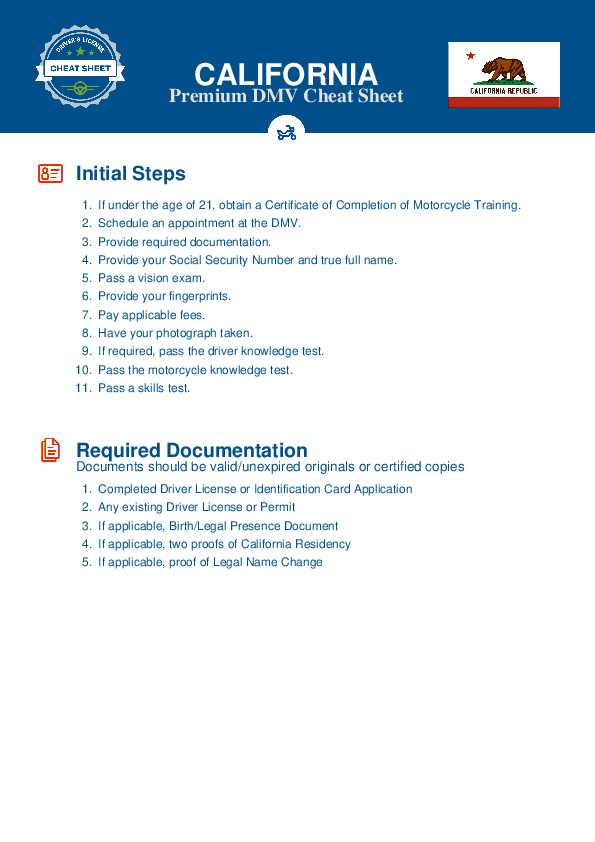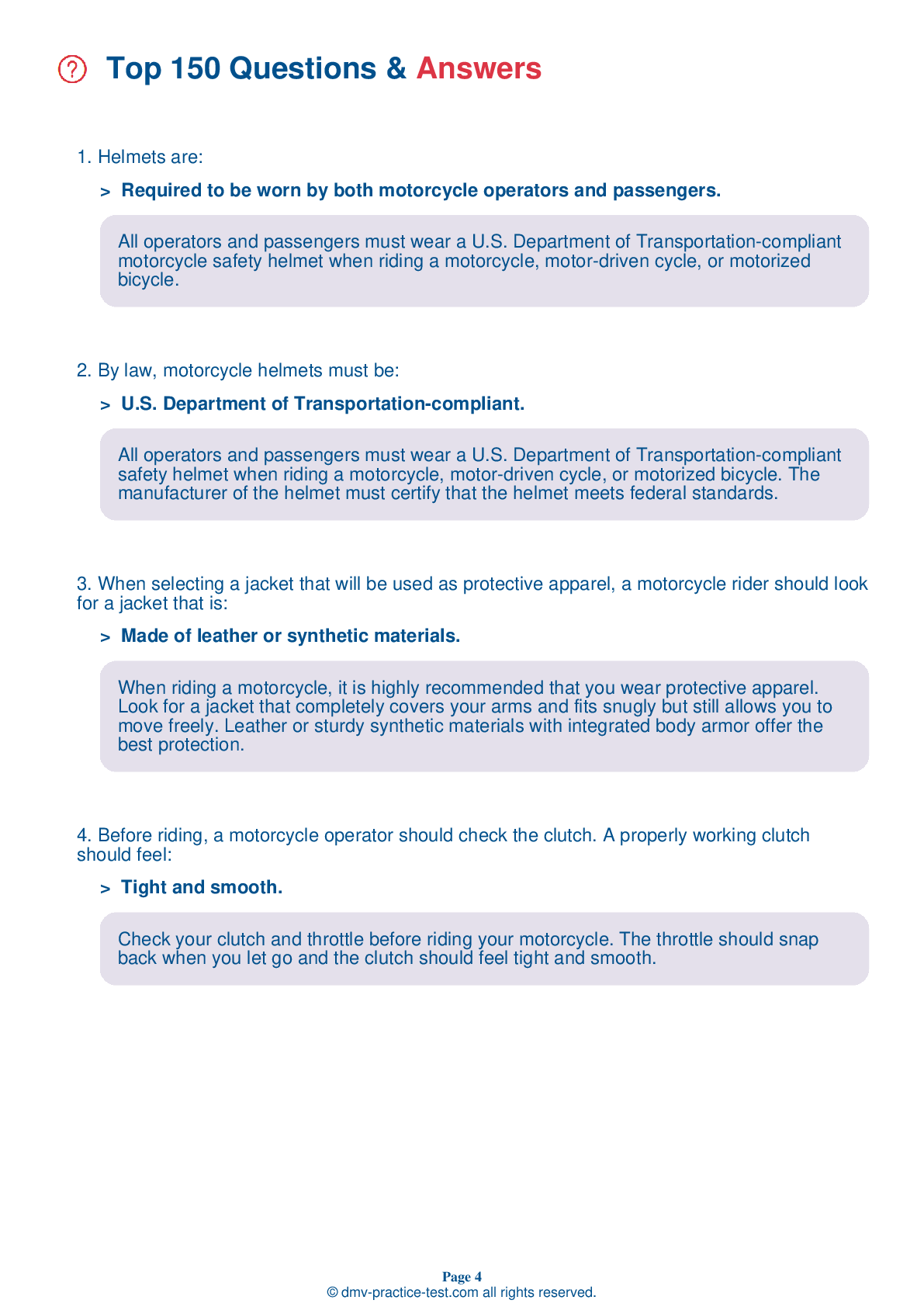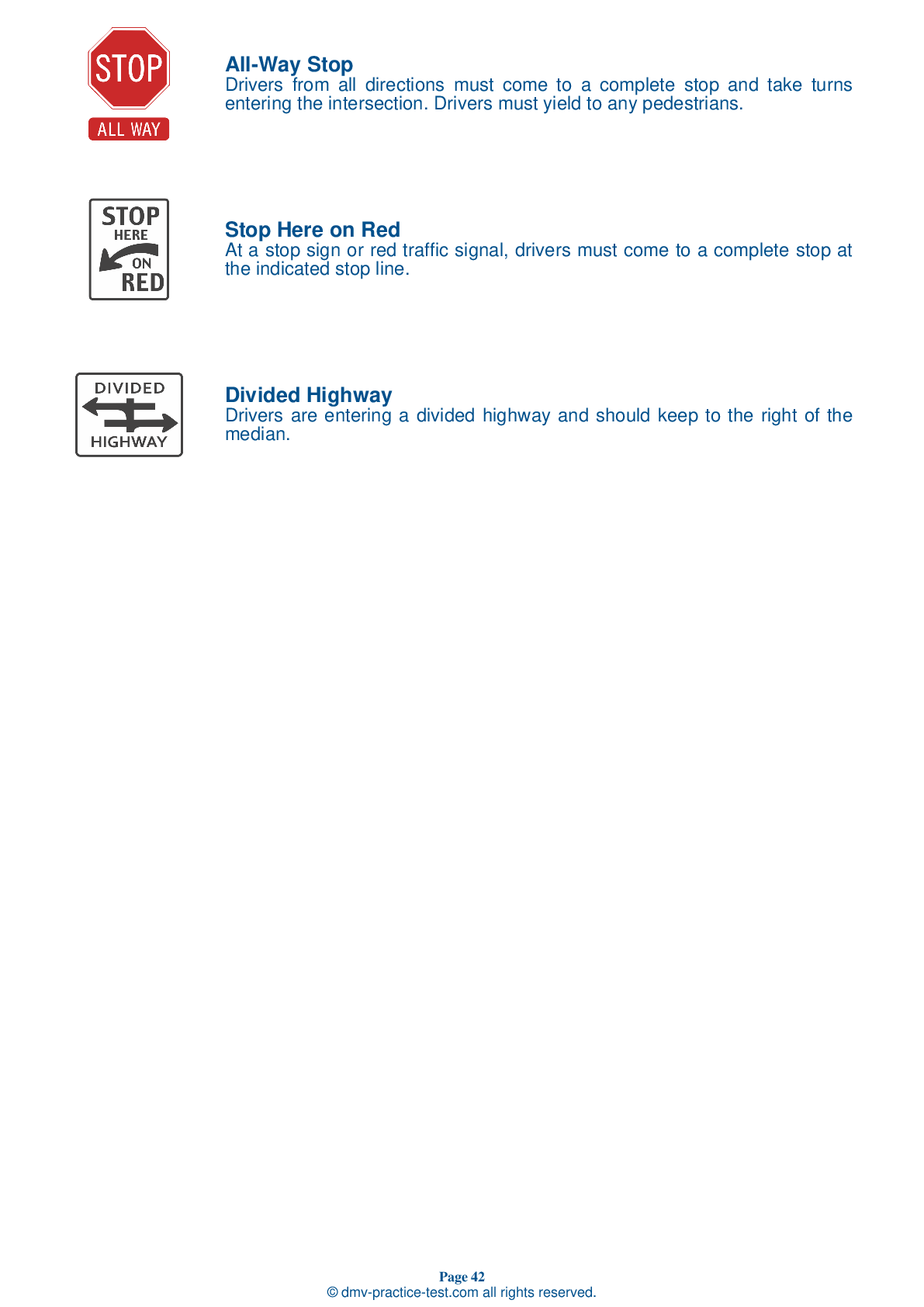Motorcycle Test | License CA 2025 | FREE Online Practice! #9
Take this FREE motorcycle test (license in CA 2025) to check your knowledge of the road rules. To improve your results, download a motorcycle handbook online, study theory, and practice for free on our website. Still worried about how to get a motorcycle license in California in 2025? Check our website for more sample tests, train as much as possible, and boost your grades!
1 . A sign that your rear tire has suddenly gone flat is that:
If the rear tire of a motorcycle goes flat, the back of the motorcycle may jerk or sway from side to side. If you experience this movement when riding your motorcycle, you should stop riding and check your tires as soon as possible.
2 . When being passed by another vehicle, you should travel in:
When being passed, the center portion of the lane is generally the safest lane position for a motorcyclist. Riding on the side nearest the passing vehicle increases the risk of colliding with it. Riding on the side farthest from the passing vehicle can also be dangerous because it may prompt the driver to return to your lane before it is safe to do so.
3 . The best lane position for a motorcycle:
There is no single lane position that is best at all times. Choose the lane position that allows the most visibility and space around you. Change your lane position as traffic situations change.
4 . If another driver is following you too closely, you should:
If someone is following you too closely, it is a good idea to flash your brake light before slowing down. A tailgater may be concentrating on you and not see upcoming hazards that require traffic to slow down.
5 . It can be difficult to ride right after it starts raining because:
Pavement can be particularly slippery after it has just started to rain. Oil from vehicles will have not yet washed away from the surface of the road, forming a slippery mixture with the water.
6 . Before starting a turn, a motorcyclist should change gears to:
It is best to change gears before starting a turn. Shifting gears while in the turn can cause a sudden change in power to the rear wheel, causing a skid. If you must change gears while in a turn, change gears smoothly to best prevent skidding.
7 . Which of the following is not a method used to maintain control of a motorcycle in a turn?
To ensure control when making a turn, you should reduce your speed before entering the turn. Look through the turn in the direction you want to move, press on the handle grip to lean in the appropriate direction, and roll on the throttle through the turn to stabilize suspension.
8 . Grabbing at the front brake or jamming down on the rear brake:
Grabbing at the front brake or jamming down on the rear brake can cause the brakes to lock. This may result in control problems.
See the exact questions that will be on the 2025 California DMV exam.
99.2% of people who use the cheat sheet pass the FIRST TIME
Jeneen was tired of paying $5/gallon. She got herself a scooter that required the motorcycle license. She studyed the motorcycle test cheat sheet and passed her test the next day!
Christopher tells us how he knew nothing prior to obtaining the motorcycle study guide, and he only got one question wrong because he clicked on the wrong answer by mistake.



